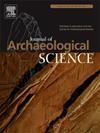Metaproteomic approaches to ancient foodways: A review
IF 2.6
1区 地球科学
Q1 ANTHROPOLOGY
引用次数: 0
Abstract
Proteomic approaches to understanding ancient foodways have rapidly expanded in recent years, addressing diverse questions, regions and sample types. Proteins are well placed to explore questions of ancient food given that they can sometimes provide tissue and taxonomically specific ingredient detections and can be resistant to degradation into archaeological timescales. Here I review the development of protein studies of ancient foodways, and current and future research agendas. The development of protein-based approaches to ancient foodways is reviewed, spanning early amino-acid and immunological approaches to residues on stone tools and pottery, then shifting to a discovery based “shotgun” approach. The sample types that have yielded proteomic insights into ancient food are outlined, including stone tools and pottery and their residues, well preserved food remains, dental calculus and other organic remains. Finally, the current research agendas are laid out, including understanding the biases which impact protein preservation, optimising extraction and data analysis pipelines for ancient samples, and implementing multi-method approaches. Suggestions for future studies include further development and refinement of ancient protein authentication and screening approaches, and a focus on benchmarking expected protein results from a diverse range of experimental studies of intentional actions such as food preparation practices and incidental taphonomic factors, the results of which will inform expected preservation and provide a basis of archaeological interpretations.
古代饮食方式的元蛋白质组学研究综述
近年来,了解古代食物方式的蛋白质组学方法迅速发展,解决了不同的问题、地区和样本类型。蛋白质是探索古代食物问题的好地方,因为它们有时可以提供组织和分类上特定的成分检测,并且可以抵抗退化到考古时间尺度。在这里,我回顾了古代食物方式蛋白质研究的发展,以及当前和未来的研究议程。回顾了以蛋白质为基础的古代食物方法的发展,从早期的氨基酸和免疫方法到石器和陶器上的残留物,然后转向以发现为基础的“鸟枪”方法。对古代食物产生蛋白质组学见解的样品类型进行了概述,包括石器和陶器及其残留物,保存完好的食物残留物,牙石和其他有机残留物。最后,提出了当前的研究议程,包括了解影响蛋白质保存的偏见,优化古代样本的提取和数据分析管道,以及实施多方法方法。对未来研究的建议包括进一步发展和完善古代蛋白质鉴定和筛选方法,并将重点放在从各种有意行为(如食物制备方法和偶然的地理因素)的实验研究中获得的预期蛋白质结果的基准上,这些结果将为预期的保存提供信息,并为考古解释提供基础。
本文章由计算机程序翻译,如有差异,请以英文原文为准。
求助全文
约1分钟内获得全文
求助全文
来源期刊

Journal of Archaeological Science
地学-地球科学综合
CiteScore
6.10
自引率
7.10%
发文量
112
审稿时长
49 days
期刊介绍:
The Journal of Archaeological Science is aimed at archaeologists and scientists with particular interests in advancing the development and application of scientific techniques and methodologies to all areas of archaeology. This established monthly journal publishes focus articles, original research papers and major review articles, of wide archaeological significance. The journal provides an international forum for archaeologists and scientists from widely different scientific backgrounds who share a common interest in developing and applying scientific methods to inform major debates through improving the quality and reliability of scientific information derived from archaeological research.
 求助内容:
求助内容: 应助结果提醒方式:
应助结果提醒方式:


